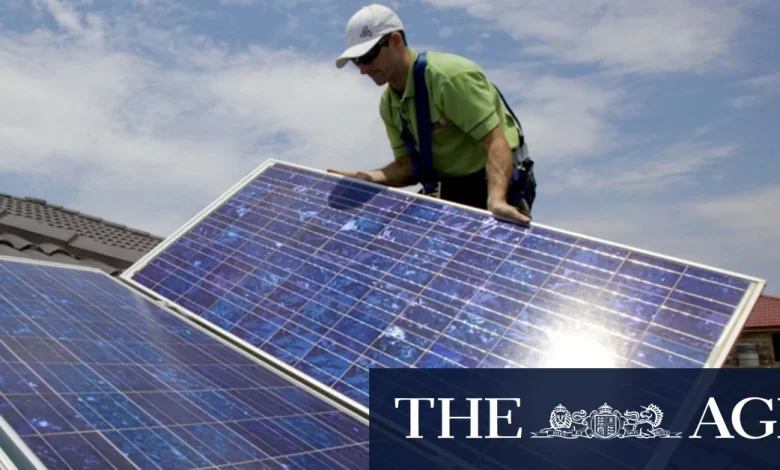Three hours of free power for everyone from July – but there’s a catch

Loading
The government is under attack from the opposition over rising energy prices. Bills are up about 30 per cent in NSW and 20 per cent in Victoria since the Albanese government was elected in 2022, despite its election promise to cut power bills by 2025.
Power bills have risen chiefly because of rising fossil fuel prices, as well as the cost of running Australia’s ageing fleet of coal-fired power plants, and because of a tardy rollout of wind farms.
The latest round of state and federal power bill subsidies will wind up by the end of the year, and it is not known if they will be renewed. The cost to federal taxpayers since they began in 2023 has hit $5 billion.
Meanwhile, electricity prices rose 9 per cent in the past quarter, according to the Australian Bureau of Statistics, contributing to a 1.3 per cent rise in inflation for the September quarter, taking the annual rate to 3.2 per cent.
The Solar Sharer plan will be available from July next year to customers in NSW, South Australia and south-east Queensland, where the AER sets benchmark power plans. The federal government is also aiming to offer the deal in Victoria and Western Australia, where the state governments set the floor price.
AER chairwoman Clare Savage said the scheme could lower the cost of running the electricity grid.
“Shifting more demand to the middle of the day would lower the cost of the electricity system for all consumers as we don’t need to build as much generation or poles and wires to meet the evening peak,” Savage said.
Solar panels on residential homes in Casula in western Sydney.Credit: Wolter Peeters
Solar power floods the east coast electricity grid during the middle of each day and wholesale costs – what retailers pay to generators for supply – typically hit negative prices around noon.
This solar glut is forcing authorities to curtail supply into the system to prevent dangerous spikes in voltage that could cause blackouts.
The glut has also slashed energy retailers’ demand for household rooftop solar, which means the feed-in tariffs available to households with solar panels have fallen over the past decade from about 20¢ a kilowatt-hour to 5¢ or less.
Loading
The Solar Sharer plan is designed to increase daytime power consumption, absorbing some of the noon glut.
It would also help shift usage patterns and reduce electricity demand when the grid is under strain after 5pm as solar power falls and households switch on their appliances.
The Energy Department analysis found a large household would save about 28 per cent off their bill by shifting 25 per cent of its electricity consumption to a free period. The average household bill in Sydney is about $2000. The average in Victoria is about $1700.
Cut through the noise of federal politics with news, views and expert analysis. Subscribers can sign up to our weekly Inside Politics newsletter.





